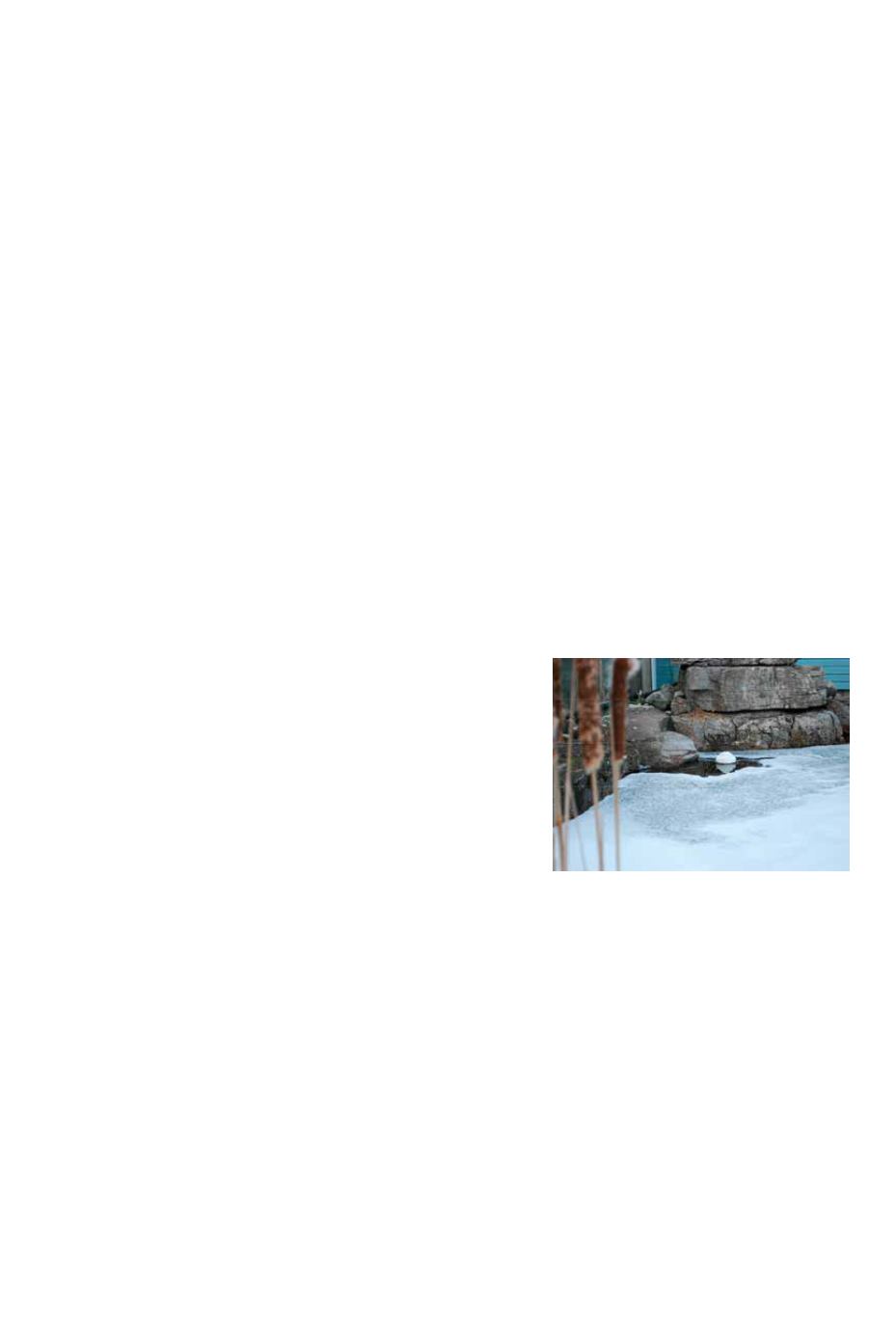
42
2017 Catalogue
Phone: 519-782-4052
Many people treat Tropical Shallow Water Plants and Water Hyacinths as annuals due to the cost and effort
required to overwinter. Simply compost plants in the fall and restock the pond the following spring.
Water gardeners in Canada frequently use the previous overwintering methods for plants. These suggestions
can be used alone or in any combination to best suit your own situation. There is no guarantee that your plants
will survive the winter. By trying these commonly used methods your chances of success will be increased. We
would be glad to hear from you if you have found other successful ways to winterize your plants.
OVERWINTERING YOUR FISH
Goldfish and Koi
Choose a method that will best suit you and your budget. First determine if your pond is likely to freeze solid.
The pond’s location, size of fish and the number of fish all have an effect on the success of overwintering
goldfish. Reduce feeding as the temperature cools in the fall. Fish metabolism slows down considerably and
they may not be able to digest food. Spring & Fall Diet fish food (See page 21) is recommended for fall feeding
(and also in the early spring). Do not feed when water temperature is below 10°C or 50°F. The following
methods are suggestions for smaller ponds that allow for drainage and capture of fish. When drainage is not
practical, as in large or natural ponds, wintering is best left to Mother Nature. Drainage may not be necessary,
if there is little debris and/or leaves in the pond. However, a 1/3 partial water change is recommended in the
fall and the following spring. During water changes, replace water slowly using nozzle spray and add a water
treatment that removes chlorine and chloramine (See page 24).
Methods:
A.
Minimize the leaves that fall into your pond. The use of netting will help to eliminate this problem. Drain
the pond in late fall after the leaves from nearby trees have fallen. Move the fish to covered containers
filled with pond water. Clean leaves and other debris from the pond, then refill. Let fresh water sit at least
24 hours to allow chemicals and dissolved gases to dissipate. If chloramines are present a neutralizer may be
required. Place the fish back in the pond. Make sure fish are not stressed during this procedure by keeping
their water cool and oxygenated.
OR
B.
First, be sure excess leaves and debris have been removed from
pond. Use a pond heater or bubbler during the winter to keep
a small area of your pond free from ice. This allows toxic gases
that collect under the ice to escape and oxygen to dissolve in the
water. Keep in mind that you do not need to run your heater or
bubbler constantly, just enough to keep a small area ice-free. Be
careful that the heater does not touch or melt the pond liner.
OR
C.
Remove the fish from the pond and bring indoors to an aquarium
or tank for the winter. Keep the tank relatively cool and feed
moderately. Oxygenation, filtration and partial water changes are recommended. Return the fish to the
pond the following spring, being careful not to shock the fish with a sudden temperature change.
NOTE:
• More fish die from toxic gases produced by rotting vegetation trapped in the water than die from freezing.
• Healthy Goldfish and Koi have a greater chance of surviving the winter.
• Try to minimize stress when overwintering.
• When transferring fish, ensure water temperatures are similar by floating containers before release.
Water gardeners in Canada frequently use the previous overwintering methods for fish. These suggestions can
be used alone or in combination with one another to best suit your situation. There is no guarantee that your
fish will survive the winter. By trying these commonly used methods your chances for success will be increased.
We would be glad to hear from you if you have found other ways to overwinter your fish successfully.
OVERWINTERING YOUR PLANTS
cont’d
Pond Deicer at work.


